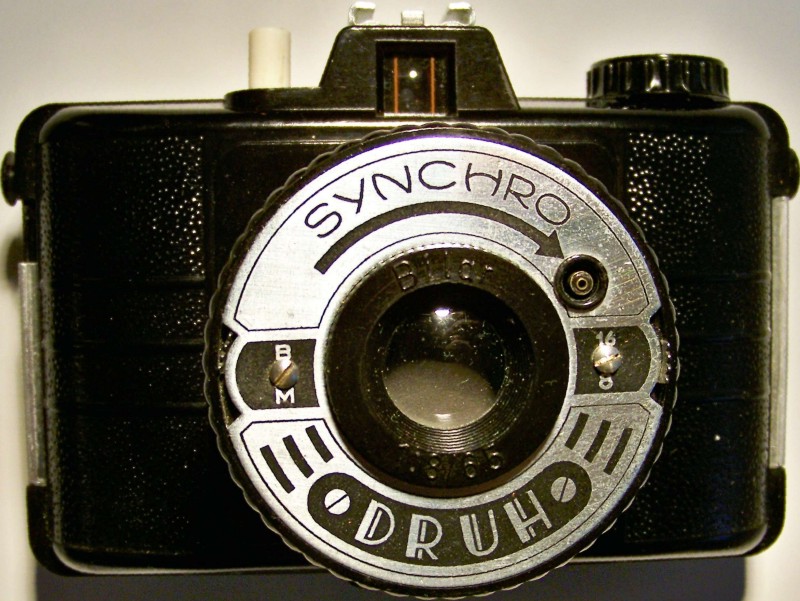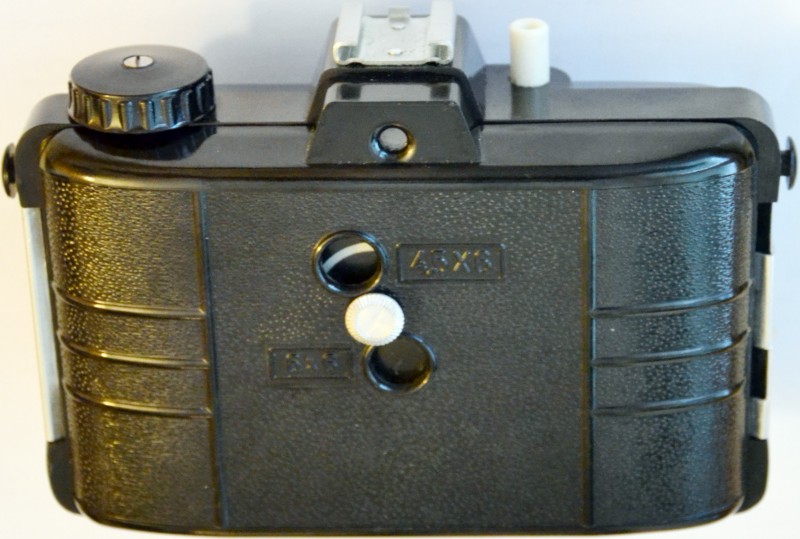PL
Druh is a easy to use Polish camera on a film type 120, produced after World War II (from 1956) by the Warszawskie Zakłady Fotooptyczne, and specifically in the branch WZFO Brzozow. Was produced in two versions: Druh (older model) and the Synchro- Druh with socket and sled to the flash lamp.
This is a box camera built on the model of the German camera Pouva Start. It performs photos into the 6x6cm format, and with a special adapter also 6×4,5cm. Synchro Druh companion and belongs to the „family” the bakelite camera with lens manufactured as periscope collapsable screw tube, which is derived from the construction and design of pre-war French Photax II. It thus belongs to the style of Art Deco design.
This camera, like the Czech Pionyr and German Pouva was created for young amateur wishing to capture important moments. Fulfil the role of today’s compact camera. Although only two of the regulatory levers, photographers often commit mistakes and to do blur. Cameras of this type had no safeguards against the performing of two images on one film frame.
The collection I have Druh synchro. I had in the 50s’ the oldest model Druh without connector to flash and with the shutter release button made from alu. Unfortunately I only have yet a few photos. The oldest model is difficult to obtain.
I bought this camera for 20 PLN.
Data of my collection
- Format negatives 6×6 cm and 6×4.5
- Lens „Bilar” pop-up, with 2 glasses, standard 1:8 / 65 mm configuration periscope
- Aperture 8, 16
- The rotary shutter approximately 1 / 50 and B
- Sled and slot sync flash (Druh Synchro)
- Constant focus on a few meters from the high hyperfocal
More:
- https://pl.wikipedia.org/wiki/Druh
- https://wojzo.pl/?druh,4
- http://aparatyanalogowe.pl/content/polskie-aparaty-fotograficzne/druh-1


